Documents – Live Working Documents
In Intellectible, the Documents tab allows teams to collaborate on documents generated through workflows. These documents — often proposals, summaries, or reports — are live working files designed for real-time editing, refinement, and AI-assisted review.
Why it matters: Intellectible accelerates not only automation, but also the high-output document review process by combining live editing with integrated AI tools.
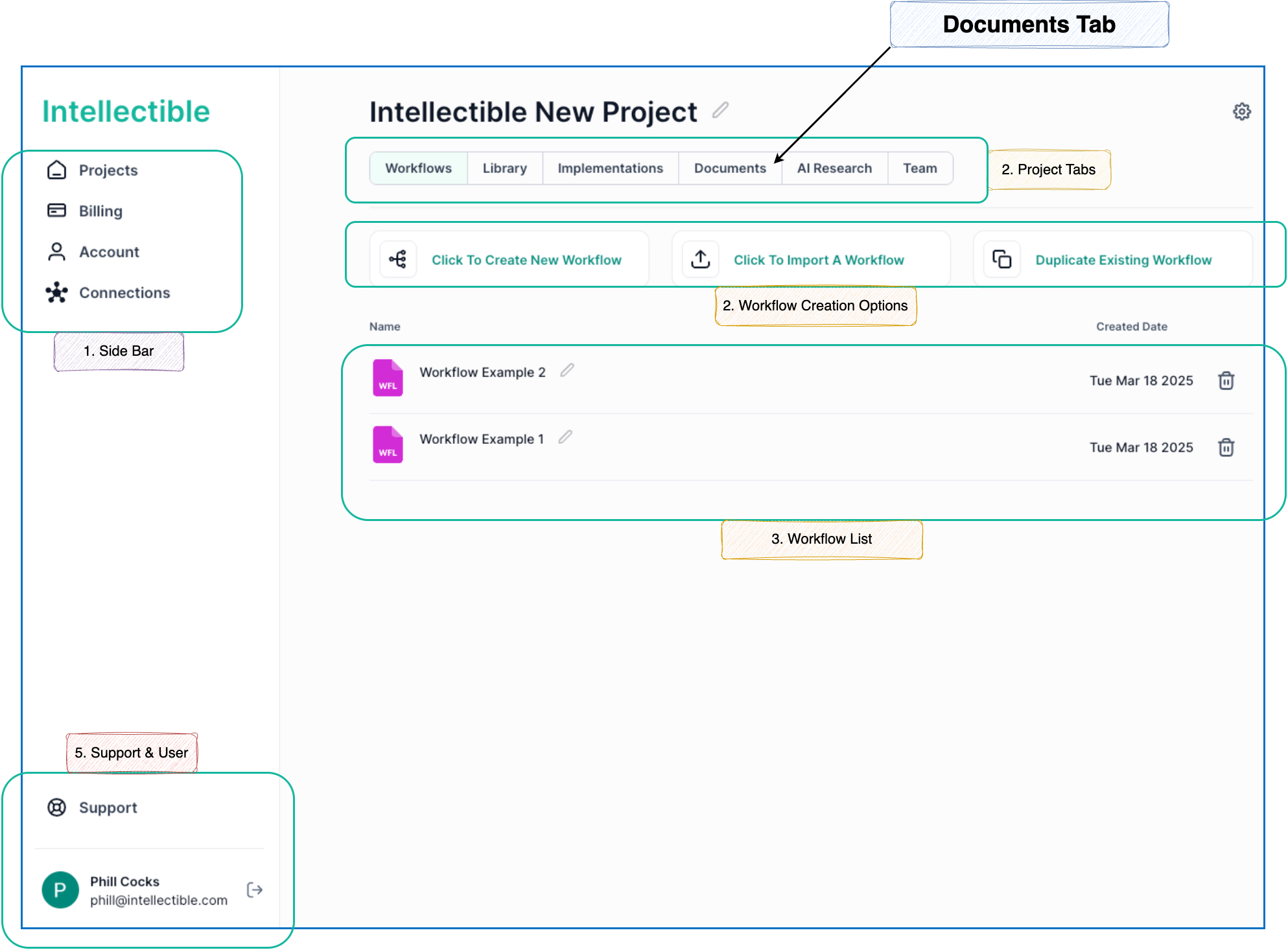
Why Use the Documents Tab?
Documents generated through workflows often require clarification, expansion, or final polish before submission. The Documents tab lets your team:
- Edit and collaborate on documents directly
- Clarify and enhance AI-generated sections
- Use AI to rephrase, refine, or explain content
- Work faster with fewer tool-switches
These are “living documents” — editable, versionable, and enhanced by team knowledge and AI intelligence inside Intellectible.
How to Create a Document
In Intellectible, documents can be created in two ways:
- Directly from the Documents tab, using a template or connected workflow
- Through a workflow that is configured to output documents
- Documents cannot be created from scratch inside the Rich Text Editor.
- Files stored in the Library (e.g., PDFs, DOCX) are not editable — only documents created through the methods below can be opened and modified.
Creating a Document from the Documents Tab
From the Documents tab, click the “Generate New Document” button. You’ll be prompted to:
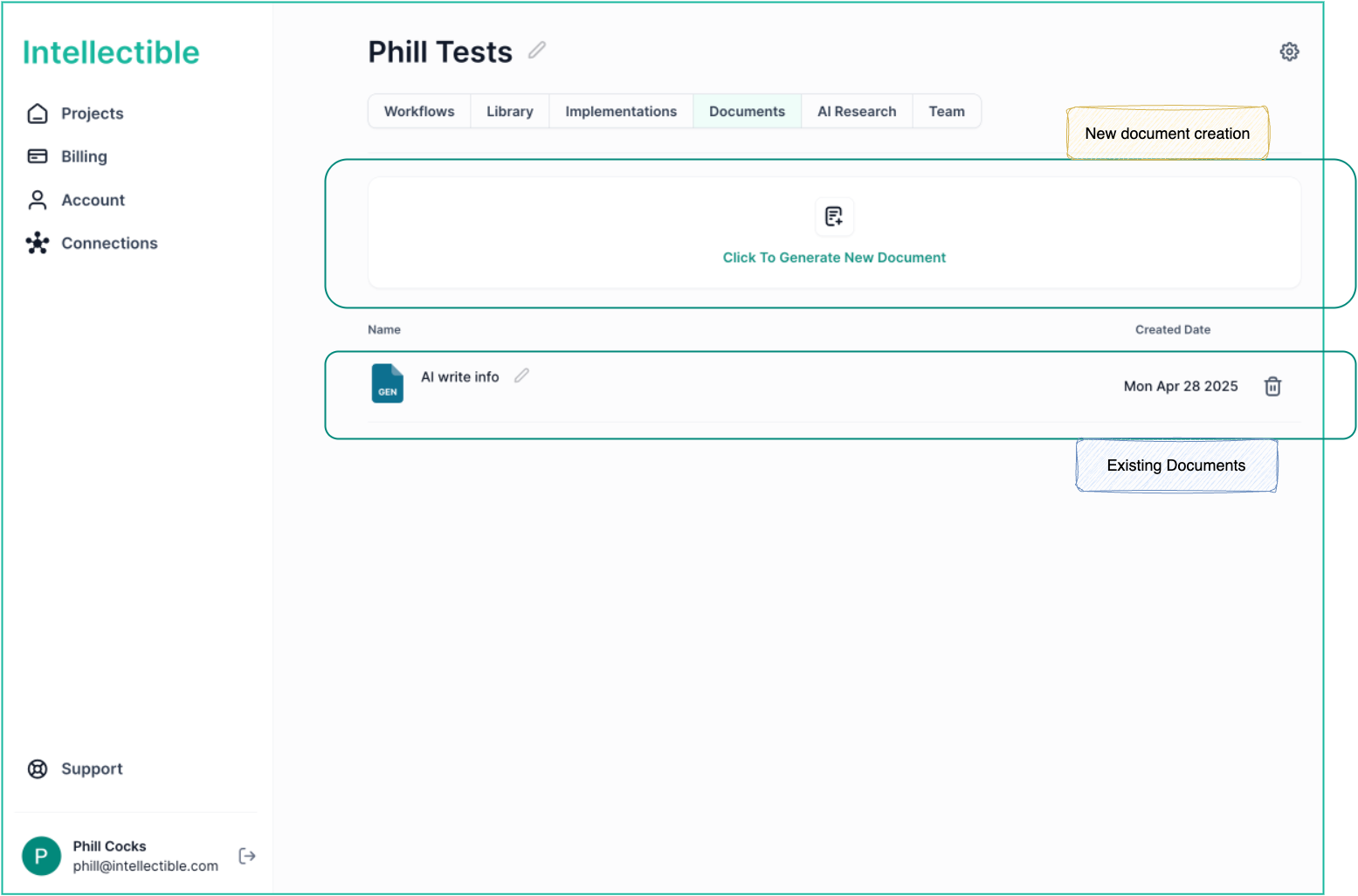
- Name your document
- Select a starting point, including:
- A blank document
- A pre-built template (e.g., Summary, Company Info Sheet, Business Grant Application)
- A workflow-powered document, if an eligible workflow exists in the project
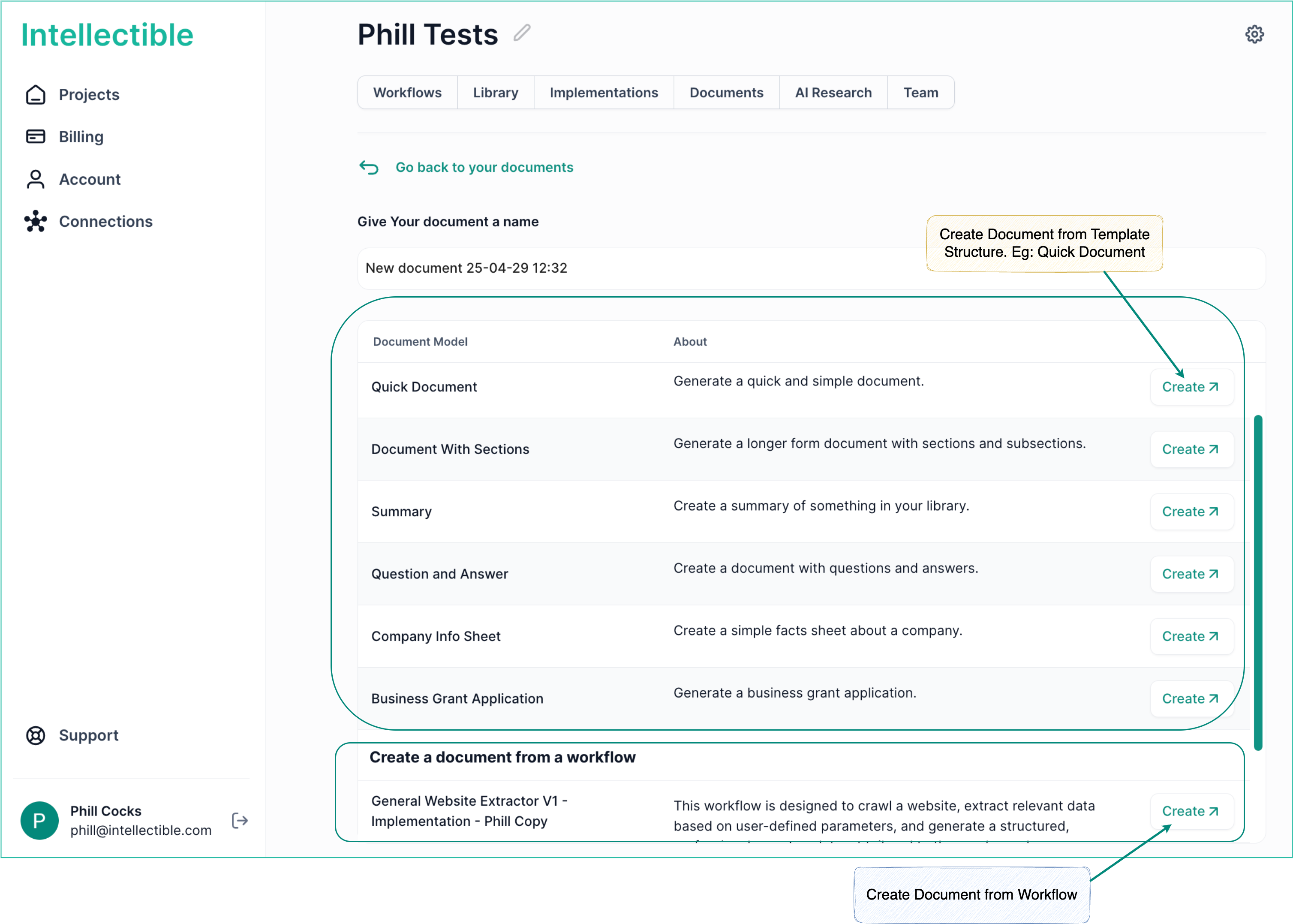
To use a workflow as a starting point, it must first be enabled as a document model in the workflow settings.
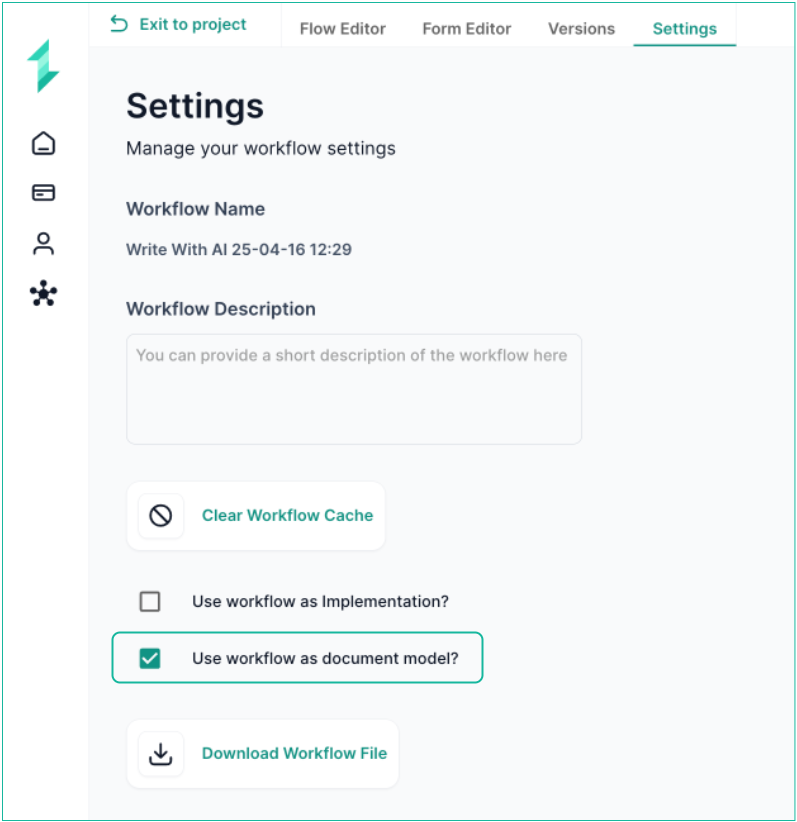
Creating a Document from a Workflow
Documents can also be generated inside a workflow by including the following nodes:
1. Add a Write To Doc node
This writes AI-generated, user-provided, or dynamically structured content into a document.
2. Add a Set Doc Complete node
This finalizes the document and sends it to the Documents tab. When triggered (typically through a form), the editor opens instantly so the user can begin collaborating.
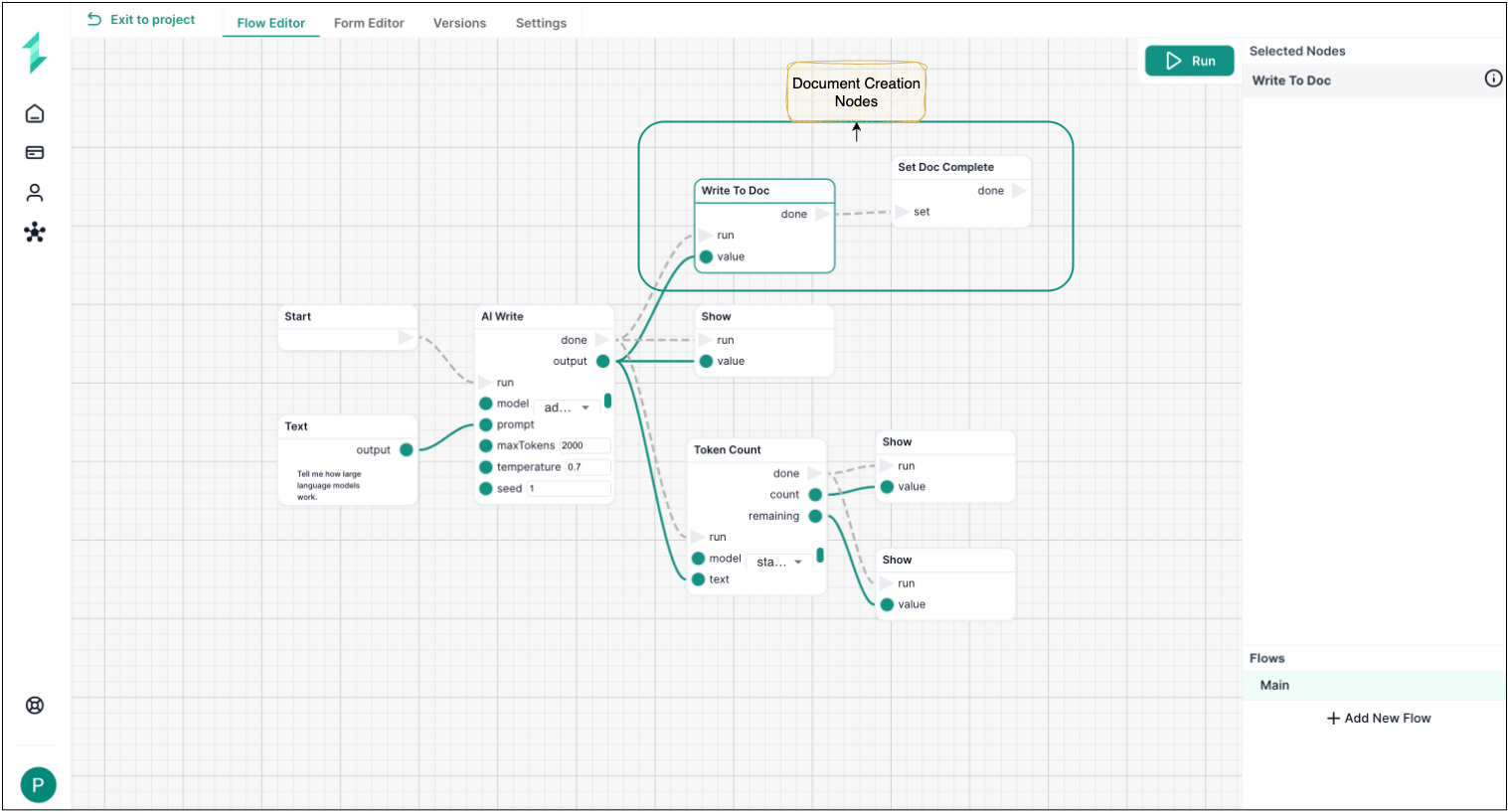
Using the Set Doc Complete node is ideal when you want to spin up editable documents with structure and data generated by workflow logic — without navigating into the workflow itself.
For example, when a user interacts with a form, it can trigger the creation of a document. That user is then automatically taken into the Rich Text Editor, where they can review, collaborate on, and finalize their content.
Using the Rich Text Editor
Once a document is finalized, click on it in the Documents tab to launch the Rich Text Editor — a full editing interface with familiar formatting tools and AI assistance.
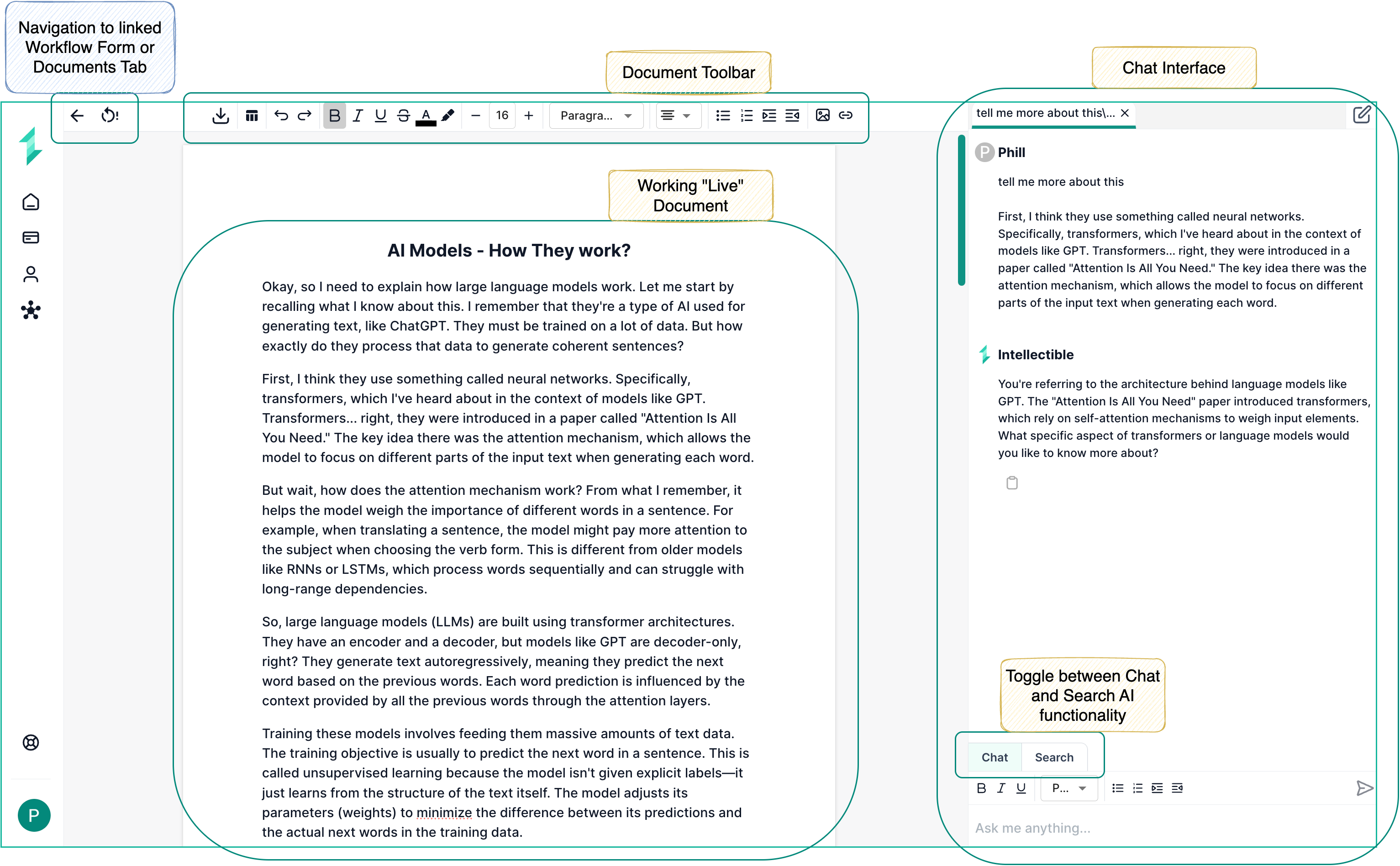
| Section | Description |
|---|---|
| Left | Live editable document shared by the team |
| Right | AI assistant for rewriting, referencing, and suggestions |
| Top | Toolbar for formatting: bold, italic, lists, headings, tables, etc. |
AI Edit (Document-Specific Rewriting)
When working inside the document editor, you can highlight any section of text and trigger AI Edit. This opens a focused AI editing panel directly above the document, allowing you to revise, clean up, or expand that section — without affecting the rest of the document.
The AI panel gives you full control to:
- Rewrite or refine specific content
- Expand or summarize sections
- Change tone, clarity, or structure
- Reference a file from the Library or use web-based context
How It Works:
- Highlight a portion of the document
- Click AI Edit
- In the top panel under the toolbar, describe your request
For example: “Rewrite more formally using the reference file on DOD grant goals.” - Choose your context source:
- A specific file from your project’s Library
- Or Web Search for live context
Once generated, toggle between the original and edited version to decide which to keep.
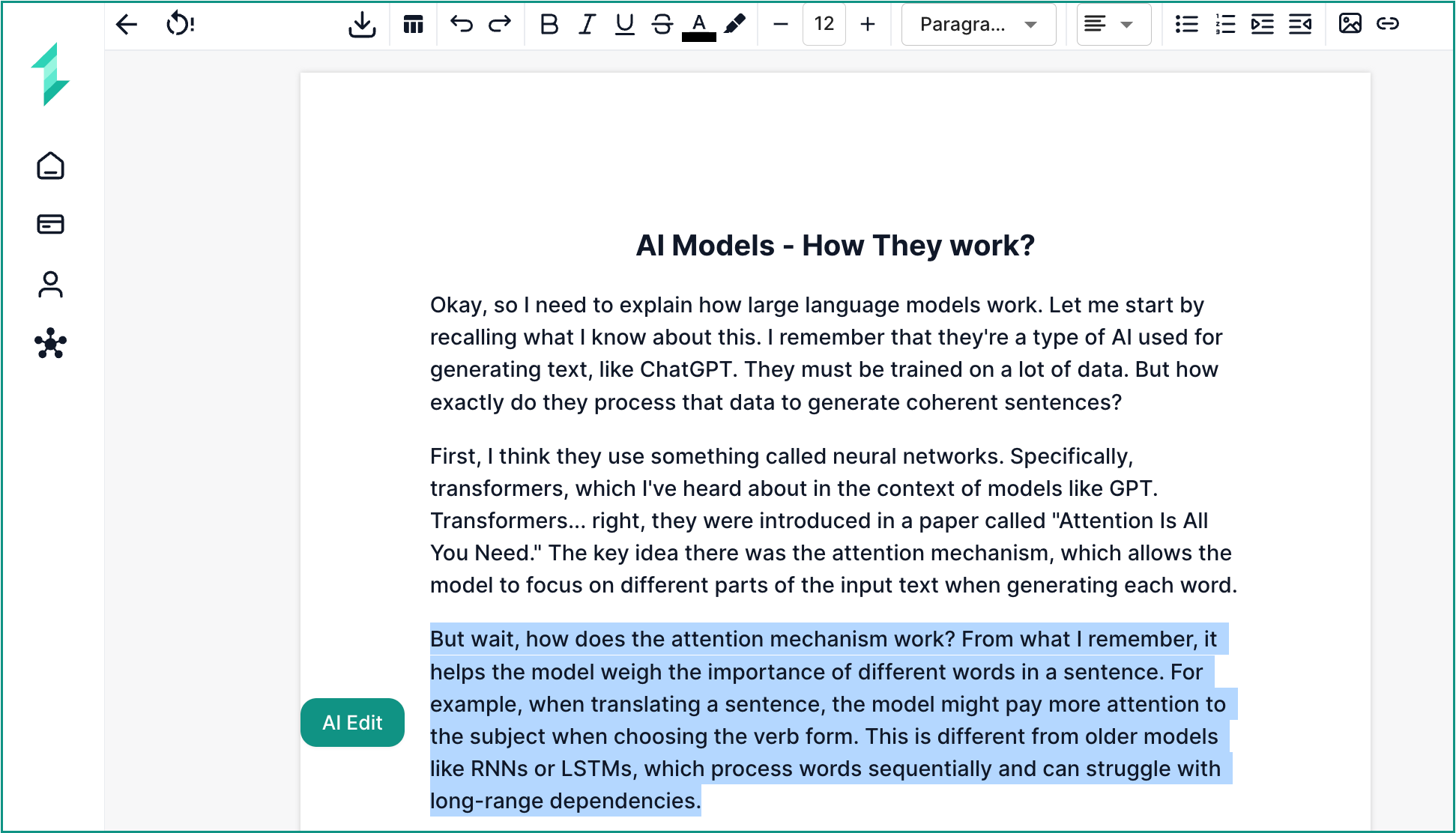
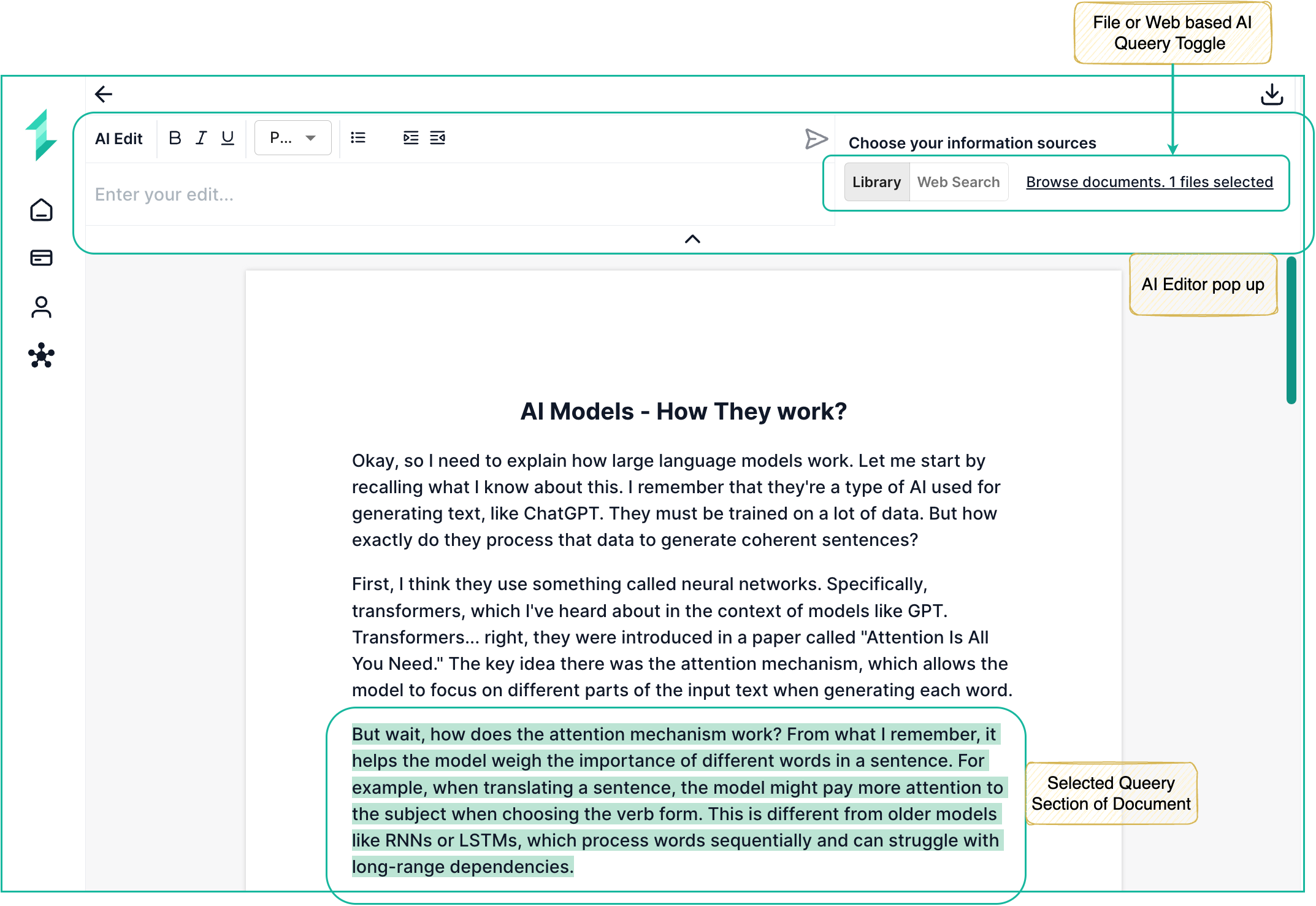
Chat Panel (Ask Without Editing)
The chat assistant in the right-hand panel is a powerful tool for exploration, clarification, or external research — without modifying the document.
Use it to:
- Ask open-ended or topic-based questions
- Reference specific files from your Library
- Run searches to gather external information or explanations
To analyze document text, copy and paste the relevant section into the chat box.
There are two ways to interact with AI inside the document editor — each designed for different purposes:
-
AI Edit (Inline Pop-Up)
Tied to the highlighted document text. It has full awareness of the surrounding document context and allows direct editing. Use it to improve, rewrite, or expand specific parts of your document. -
Chat Panel (Sidebar)
Separate from the document. It cannot “see” the document unless you copy and paste into it. Use it for research, clarification, or asking AI questions that inform your writing, without making edits.
Formatting and Manual Editing
The Rich Text Editor supports full formatting capabilities:
- Font styling (bold, italic, underline)
- Heading levels
- Tables, bulleted lists, alignment
- Inserting hyperlinks & images
- Undo/redo and version tracking
- Download as a DOCX file to store and send easily
You can treat the editor like any modern doc tool — with the bonus of embedded AI.
Best Practices
- Use Set Doc Complete in workflows to send drafts into the Documents tab
- Reference Library files in AI rewrites for accuracy
- Use AI Edit to strengthen automated outputs
- Use Chat to explore topics or clarify ideas separately
- Use versioning during major editing phases
Summary
The Documents tab transforms raw automation output into polished, publishable work. With real-time editing, version control, and intelligent AI guidance, teams can review, improve, and finalize documents faster — together.